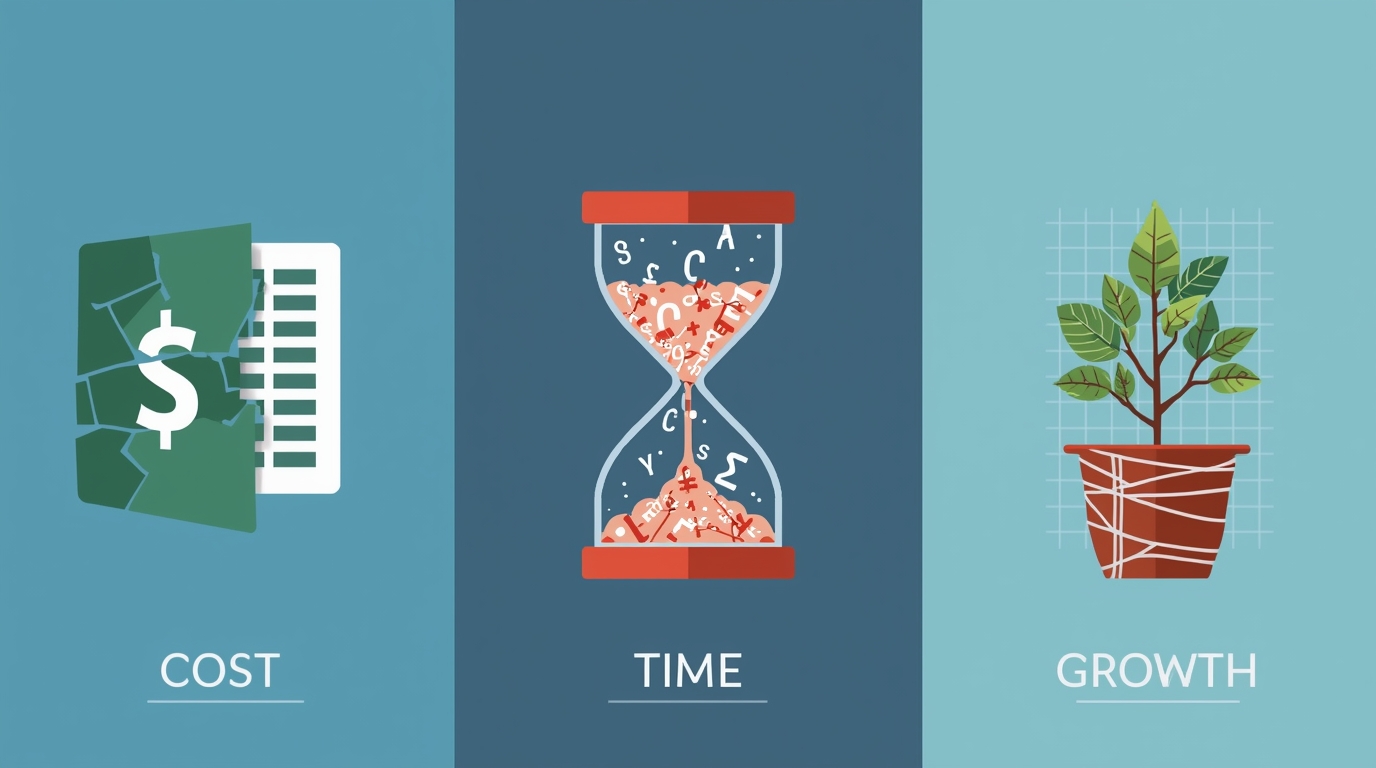
It happens in all companies at one time or another: a manager comes along who is always short of time. He and the people working under him are chronically stressed, working under time pressures and breaking deadlines. His colleagues sympathize with him: “Their projects are so hard!” and the manager cuts off all other requests with the phrase “I don’t have time!”
But soon this manager, unable to take the strain, resigns, and someone takes his place. Suddenly the workflow is transformed: No one is rushing anywhere, projects are completed on time, and employees even find the time to chat over a cup of coffee or have a game of table tennis.
Why does it happen? After all, the projects, the deadlines and the employees are all the same. The overall volume of work has not changed.
There are many possible reasons. But more often than not, chronic time pressure is the result of poor management.
Let’s take a look at two situations, from an apparently quite different domain.
Sequential management
You wake up in the morning as usual at 07:00. To get to work on time you have to leave the house at 08:00. You have a full hour, more than enough time. You have to:
- Wash
- Make a cup of coffee
- Make yourself breakfast (e.g. cook a French omelet)
- Eat your breakfast
- Put on your office clothes, make yourself look presentable before you go out, do your hair etc.
There’s no sign of any trouble. Your morning takes the following course:
The clock reads 07:00—you get up as soon as the alarm goes off, go to the bathroom and spend 15 minutes there: you brush your teeth, shave or make up etc.
The clock reads 07:15—you put on your house clothes, go to the kitchen, put the coffee pot on the stove and keep an eye on it for ten minutes as the froth slowly rises.
The clock reads 07:25—you beat a couple of eggs, add milk, salt, mix together, pour into a frying pan, cut up some cheese and tomatoes. The inviting smell of your delicious omelet spreads throughout the kitchen.
The clock reads 07:45—the omelet is ready, you dish it out onto the plate and sit down to have your breakfast. The omelet is hot, it scolds your lips and you try to wash it down with your coffee, which has now had time to cool. And then with horror you notice...
...it’s already 08:00! Fixing your hair as you go, you literally leap into your work clothes. You no longer have time to make yourself presentable before you go out.
As you dash out of the house, a number of your shirt buttons left undone, your cell phone left at home in the panic, your watch shows 08:15. You risk not getting to work on time and you have to take a taxi.
Why you were late
How did it happen? Apparently there was nothing that sidetracked you, you didn’t waste time along the way—and yet you didn’t have enough of it. In fact the whole morning followed its intended course, with no surprises. Had something actually happened—had you accidentally smashed your mug, poured coffee down yourself, torn off a button or something—you would have been even more late.
Why didn’t you make it on time? Do you need to wake up earlier? Set your alarm for 06:30?
Visually, your morning could be represented like this:

In other words, you did everything in sequence, one thing after the other, and not in the most sensible order. That is why you were late. The total amount of time it takes to do these things is more than one hour. Simple arithmetic.
Parallel management
But you are a manager. You see mistakes as opportunities to learn lessons and draw conclusions. The next morning you organize things differently, rearranging the order of those activities.
The clock reads 07:00—your alarm goes off again, you get up, get into your house clothes, but instead of going to the bathroom like yesterday, you go to the kitchen. You mix the ingredients for your omelet, pour the mixture into a frying pan and put it over a low heat. This takes you five minutes.
The clock reads 07:05—you go to the bathroom and spend 15 minutes there like yesterday. After this you go back to the kitchen: by this point the omelet is just about cooked.
The clock reads 07:20—putting the omelet onto a plate, you leave it to cool down while you put on your work clothes, brush your hair etc.—you get yourself ready to go out, in other words.
The clock reads 07:35—you put the coffee pot on the stove and start your breakfast. The omelet has cooled down and you can eat it in a leisurely manner with no danger of getting burned. Five minutes later you take the coffee off the stove, leave your cup of coffee to cool down and finish your breakfast.
The clock reads 07:50—you calmly drink your coffee and leave the house without rushing anywhere.
Visually, your second morning could be represented like this:

(We should note in parentheses that there is bound to be someone who will point out that you shouldn’t leave a frying pan on the stove unsupervised, you shouldn’t drink coffee after eating and so on. But we are not interested in omelets and coffee per se, only your approach to problem solving.)
How is it that you had enough time in the second example?
How you did it all on time
Let’s take a look at those diagrams.
In the first example all your morning chores—the blue rectangles—form a line, because you performed them in sequence. The light blue arrow below is your morning time slot from 07:00 to 08:00. The total length of the rectangles exceeds the length of the arrow—hence you could not fit everything into an hour and you were late.
In the second example you did some of the chores concurrently, so some of the rectangles overlap each other. This way you “compressed” the total length and were able to “squeeze” all your morning chores into one hour. You cheated time!
It is worth noting that you might have even more morning chores and you would still be able to leave the house by 08:00. But only on one condition: if you do them concurrently with your other chores. For example, in parallel with eating your breakfast you might listen to your favorite music or the morning news (these are also “chores” of a sort). Getting up at 06:30 just isn’t necessary.
If you have a multi-cooker you can get all the ingredients ready the night before and set the omelet to cook on a timer. When your alarm goes off at 07:00, your omelet will already be cooked. In this case the “Omelet” rectangle in our diagram may be “shifted” further to the left to “make room” for other chores. A little optimization and you saved a whole 20 minutes on your morning schedule. And there are a bunch of other ways to achieve this.
A morning as a project
If you perform a series of activities in sequence, one after the other, the only way to cut down on the time it takes to perform them is to perform them faster. In practice, this approach normally leads to the situation described at the beginning of this article—panic, time pressure and stress.
If you master the art of organizing activities in parallel, you will have a far more effective means of speeding up the whole process: get as many parallel processes going as you can. In all likelihood, the new manager who replaced the old one was able to “parallelize” processes—and that’s how they overcame time constraints.
Knowing how to organize your morning and knowing how to organize projects have a lot in common. Without noticing it, a good manager will apply their skills of effective management even in the everyday chores that have nothing to do with their work. For them, the morning is a project and morning chores are the working processes within that project; they seamlessly set these processes in motion to bring the project to completion. Someone who can’t manage to leave the house on time in the morning is likely to be bad manager.
Parallel ≠ simultaneous
There is a saying: if you’re driving with one hand and hugging your girlfriend with the other, then you’re not doing either of those things very well. It’s true: a normal person cannot truly multitask.
Pliny claims that Julius Caesar could read, write and dictate four different letters to his secretaries at the same time. But Caesar could hardly have done this, in the literal sense of the word, simultaneously.
The grand chess master Alexander Alekhine held sessions where he would play 32 separate games of chess simultaneously—blindfold. But he didn’t make 32 moves at the same time, he made one move at a time on each of the separate boards.
A juggler who has thrown ten balls into the air at once is at any one moment following only one of those balls—the one he has to catch next.
Conclusion
Even the best manager cannot do several things simultaneously. But a good manager will master to perfection the skill of setting several processes in motion in parallel and can quickly switch between them.
Very often the phrase “I don’t have time” actually means “I don’t know how to manage my time”.


.png)


